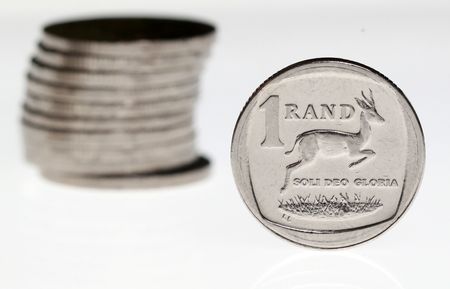By Shadia Nasralla
LONDON (Reuters) – Oil prices extended declines on Wednesday and were set for their largest monthly drop in almost three and a half years as the global trade war eroded the outlook for fuel demand while concern over mounting supply also weighed.
Brent crude futures were down 77 cents, or 1.2%, at $63.48 a barrel by 1305 GMT. U.S. West Texas Intermediate crude futures dropped 74 cents, also 1.2%, to $59.68.
So far this month Brent and WTI have lost about 15% and 16% respectively for the biggest percentage falls since November 2021.
Both benchmarks slumped after U.S. President Donald Trump’s April 2 announcement of tariffs on all U.S. imports. They then sank further to four-year lows as China responded with its own levies, stoking a trade war between the world’s top two oil-consuming nations.
Data on Wednesday showed the U.S. economy contracted in the first quarter, weighed down by a deluge of goods imported by businesses eager to avoid higher costs.
Trump’s tariffs have made it probable the global economy will slip into recession this year, a Reuters poll suggested.
China’s factory activity contracted at the fastest pace in 16 months in April, a factory survey showed on Wednesday.
U.S. consumer confidence, meanwhile, slumped to its lowest in nearly five years in April on growing concerns over tariffs, data showed on Tuesday.
While orders Trump signed on Tuesday to soften the blow of auto tariffs eased some jitters among investors, oil prices were also undermined by concern over mounting supply from OPEC+.
Several OPEC+ members will suggest a ramp-up of output increases for a second straight month in June, sources told Reuters last week. The group will meet on May 5 to discuss output plans.
“The very real possibility that OPEC+ will continue to bring extra barrels to the market as it fights to keep order within its ranks is added to the diplomatic thrusts in Ukraine and Iran, which if successful means more international crude on the water at a time when a trade war will squash any hope of demand growth,” said PVM analysts.
Also sending bearish signals on the supply side, U.S. crude oil inventories rose by 3.8 million barrels last week, market sources said on Tuesday citing American Petroleum Institute data. [API/S]
U.S. government data is due at 10:30 a.m. ET (1430 GMT). Analysts polled by Reuters expect U.S. crude oil stocks numbers for last week to show an increase of 400,000 barrels. [EIA/S]
(Reporting by Shadia Nasralla; Additional reporting by Ahmad Ghaddar in Lonond and Siyi Liu in Singapore; Editing by Peter Graff and David Goodman)









